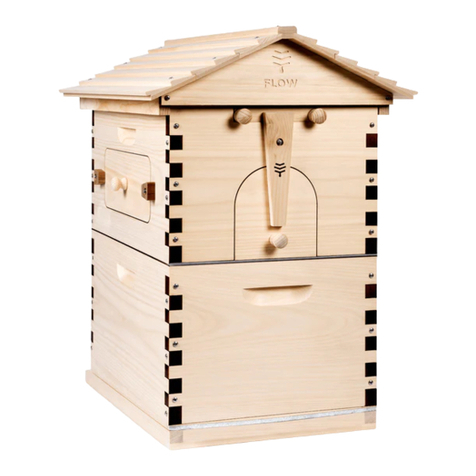
3
l
! Information in this manual is a general guide only, is not exhaustive,
and may not be applicable to your circumstances. For specific
assistance, seek advice from your local authority, a professional
service or your nearest beekeepers’ association.
Take Responsibility: We are a worldwide community of beekeepers.
To succeed, each one of us must act responsibly to keep our bees, and
the humans and pets around them, safe, happy and healthy. If you have
neighbours, it’s especially important to consider and inform them.
Additional Resources: www.honeyflow.com has regularly updated educational
information and is a a great place to start looking.
• Search our extensive FAQs at www.honeyflow.com/faqs
• Join the conversation or ask a question of fellow Flow beekeepers on
forum.honeyflow.com
• Follow our blog www.honeyflow.com/blog
• Check out our instructional videos www.honeyflow.com/beginner-videos
2SAFETY PRECAUTIONS
All beekeepers get stung at some point. Before you begin beekeeping please
read the Accredited First Aid Beekeeping Safety pamphlet.
This pamphlet will help you understand the safety precautions and first aid
responses in relation to:
• bee stings,
• the safe use of smokers, and
• safe lifting
We recommend you wear a protective beekeeping suit and use a smoker
whenever you are working with your bees.
l
! For information on dealing with bee stings and bee sting first aid see
www.honeyflow.com/beekeeping-safety




























